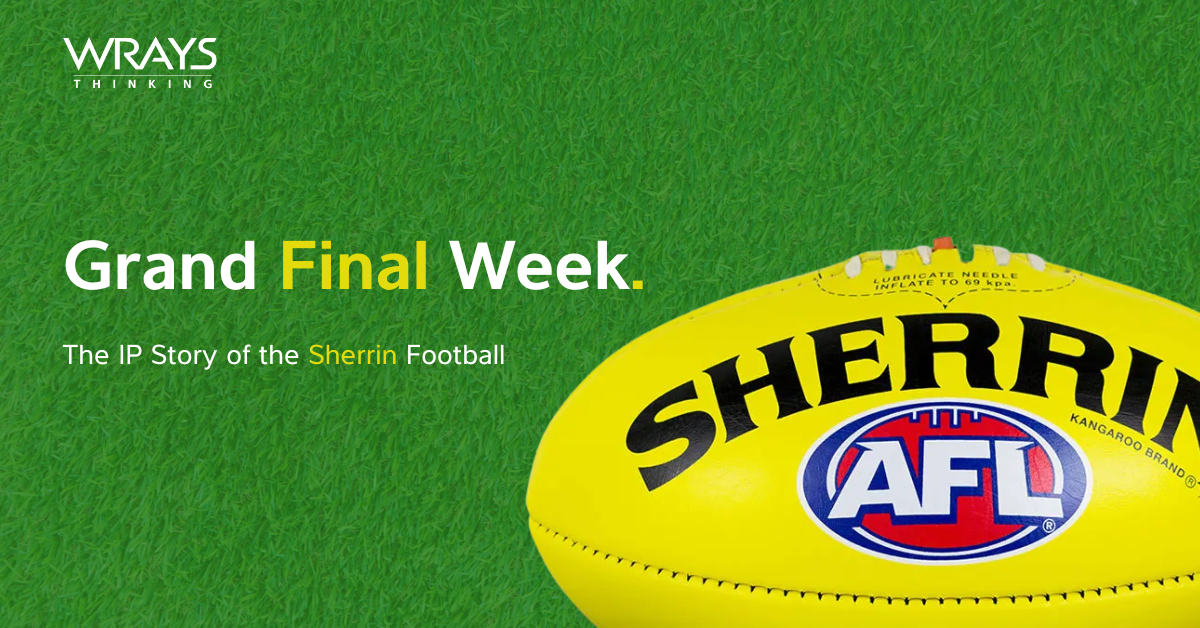The IP Story of the Sherrin Football
When Geelong and Sydney take to the MCG for the AFL Grand Final this Saturday, the attention of Australia will turn to the Centre Square and that famous Sherrin ball. To celebrate AFL Grand Final Week, our IP experts took a closer look at that piece of elongated leather which has become synonymous with the game.
The first recorded AFL game was played on 7 August 1858 using an English rugby ball. Fast forward to 1880 when Thomas William Sherrin, a saddlemaker, was given a misshapen rugby ball to fix and not only did he fix it, he made it much, much better. T W Sherrin added indented ends rather than pointy or round ones to improve the bounce of the ball, which we all know, is very important in AFL!
Unfortunately for T W Sherrin, it seems that he was a bit early to obtain Australian patent protection for his invention, assuming it met the requisite standard for inventiveness. This is because it only became possible to register Australian patents in 1904, after Federation.
T W Sherrin wasn’t the only one who tried to improve the AFL ball. Many would say that it rains quite a bit in Melbourne, and those who watch AFL will know quite well the spectacle of players trying to mark and handball a sodden footy. In 1934 Edward James Clutterbuck applied for a patent for an improved cover or outer casing for AFL balls. Clutterbuck came up with an idea for a new outer casing that would still keep quite a good bounce in wet weather and not absorb water, making it easier to handle in the wet. Even though this water proof ball seems incredibly practical, the players didn’t like it and Clutterbuck’s invention was relegated to the pages of history.
While some innovations take a while to catch on, the Sherrin football had been quickly accepted and in 1906 the Australasian Football Council was formed and adopted the size and shape of the Sherrin football for the standard AFL ball.
Even then, T W Sherrin Pty Ltd (“Sherrin”), the company started by T W Sherrin, didn’t stop innovating. The traditional football, including the original Sherrin football, was red. However, in 1935, Sherrin made a white football to be used in a game played “under electric light at the Motordome” and 1971 saw the introduction of a Sherrin yellow football as the colour was more easily seen at night. Not a company to rest on its laurels, in 2009, Sherrin made the first fluorescent ball for clubs to use when training at night.
Even though Clutterbuck’s invention never really got off the ground, Sherrin has used improvements in technology to achieve better tanning of the leather used to make the balls and advances in manufacturing processes to try and minimise the stretching of the leather when the balls become wet.
The other part of the Sherrin story that cannot be overlooked is that from the very beginning Sherrin understood the importance of branding. The trade mark SHERRIN was registered on 21 April 1922 for footballs and other goods. It was later registered for clothing and bags. While it took a bit of time, in 1997 this mark was registered for various goods, although interestingly not footballs?
was registered for various goods, although interestingly not footballs?
The Sherrin story continued to evolve. In 1972, Sherrin was sold to Spalding’s Australian subsidiary and in 2003, that subsidiary was acquired by the Russell Corporation.
When the siren sounds on Saturday, the legacy of T W Sherrin and his drive for innovation to produce the best possible ball will live on in AFL players, spectators and supporters around the country.
Good luck to both teams.

